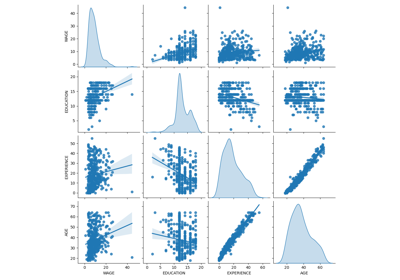RepeatedKFold#
- class sklearn.model_selection.RepeatedKFold(*, n_splits=5, n_repeats=10, random_state=None)#
Repeated K-Fold 交叉验证器。
在每次重复中使用不同的随机化重复 K-Fold n 次。
更多信息请参阅 用户指南 。
- Parameters:
- n_splitsint, 默认=5
折数。必须至少为 2。
- n_repeatsint, 默认=10
交叉验证器需要重复的次数。
- random_stateint, RandomState 实例或 None, 默认=None
控制每次重复交叉验证实例的随机性。 传递一个 int 以在多次函数调用中获得可重复的输出。 请参阅 术语表 。
See also
RepeatedStratifiedKFold重复 Stratified K-Fold n 次。
Notes
随机化的 CV 分割器可能在每次调用 split 时返回不同的结果。 您可以通过将
random_state设置为整数来使结果相同。Examples
>>> import numpy as np >>> from sklearn.model_selection import RepeatedKFold >>> X = np.array([[1, 2], [3, 4], [1, 2], [3, 4]]) >>> y = np.array([0, 0, 1, 1]) >>> rkf = RepeatedKFold(n_splits=2, n_repeats=2, random_state=2652124) >>> rkf.get_n_splits(X, y) 4 >>> print(rkf) RepeatedKFold(n_repeats=2, n_splits=2, random_state=2652124) >>> for i, (train_index, test_index) in enumerate(rkf.split(X)): ... print(f"Fold {i}:") ... print(f" Train: index={train_index}") ... print(f" Test: index={test_index}") ... Fold 0: Train: index=[0 1] Test: index=[2 3] Fold 1: Train: index=[2 3] Test: index=[0 1] Fold 2: Train: index=[1 2] Test: index=[0 3] Fold 3: Train: index=[0 3] Test: index=[1 2]
- get_metadata_routing()#
获取此对象的元数据路由。
请查看 用户指南 以了解路由机制的工作原理。
- Returns:
- routingMetadataRequest
MetadataRequest封装的 路由信息。
- get_n_splits(X=None, y=None, groups=None)#
返回交叉验证器中的拆分迭代次数。
- Parameters:
- Xobject
总是被忽略,存在以确保兼容性。
np.zeros(n_samples)可以用作占位符。- yobject
总是被忽略,存在以确保兼容性。
np.zeros(n_samples)可以用作占位符。- groupsarray-like of shape (n_samples,), default=None
在将数据集拆分为训练/测试集时使用的样本的组标签。
- Returns:
- n_splitsint
返回交叉验证器中的拆分迭代次数。
- split(X, y=None, groups=None)#
生成索引以将数据拆分为训练集和测试集。
- Parameters:
- X形状为 (n_samples, n_features) 的类数组
训练数据,其中
n_samples是样本数量 且n_features是特征数量。- y形状为 (n_samples,) 的类数组
监督学习问题的目标变量。
- groups对象
始终被忽略,存在以确保兼容性。
- Yields:
- trainndarray
该拆分的训练集索引。
- testndarray
该拆分的测试集索引。


